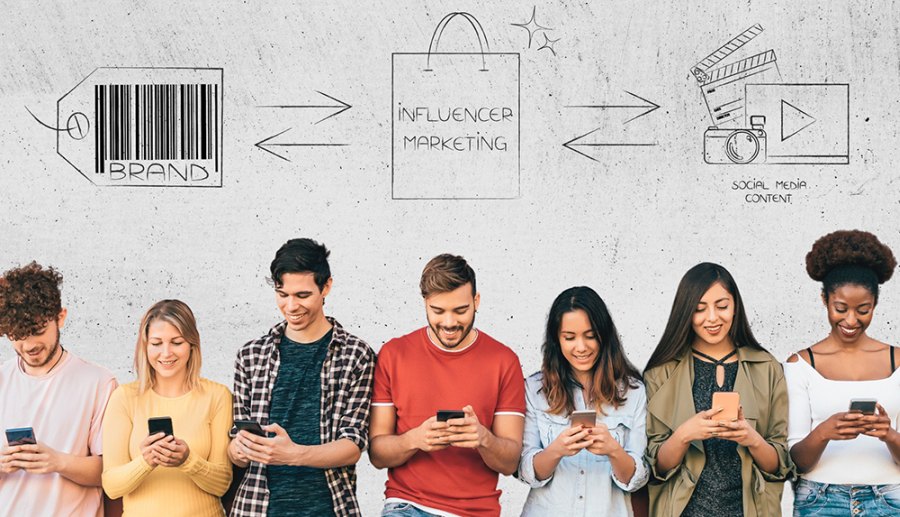Influencer Marketing 101: A Comprehensive Guide for Beginners

It is clear to see that one strategy has emerged in the landscape of digital marketing as a powerhouse for brands seeking authentic connections with their audience – influencer marketing. This dynamic approach leverages the reach and credibility of individuals who have cultivated a significant following on social media platforms. If you’re new to the realm of influencer marketing, this comprehensive guide will serve as your roadmap, navigating through the fundamental concepts, strategies, and best practices to kickstart successful influencer campaigns.
Understanding Influencer Marketing
What is Influencer Marketing?
At its core, influencer marketing involves collaborating with individuals who have established credibility and a dedicated following in a particular niche. These influencers, often known for their expertise, authenticity, or charisma, then promote a brand’s products or services to their audience.
Why Influencer Marketing?
The appeal of influencer marketing lies in its ability to tap into existing communities and foster authentic connections. Unlike traditional advertising, influencer marketing feels more personal, as it aligns with the interests and values of the influencer’s audience.
Key Components of Influencer Marketing
1. Identifying your goals
Before diving into influencer collaborations, define your objectives. Are you aiming to increase brand awareness, drive sales, or engage with a specific demographic? Clear goals will shape your influencer selection and campaign strategies.
2. Finding the right influencers
Identifying the right influencers is a critical step. Consider factors such as niche relevance, audience demographics, and engagement rates. Tools and platforms designed for influencer discovery can streamline this process.
3. Building relationships
Successful influencer marketing is built on authentic relationships. Approach influencers professionally, understand their content, and build a rapport. Genuine relationships lead to more effective collaborations.
4. Crafting compelling campaigns
Collaborate with influencers to create content that resonates with their audience while aligning with your brand message. This can include sponsored posts, reviews, tutorials, or even giveaways.
5. Setting clear terms
Clearly outline expectations, deliverables, and compensation terms in your collaboration agreements. This transparency ensures a smooth partnership and avoids misunderstandings.
6. Compliance and transparency
Adhere to legal and ethical guidelines. Ensure influencers disclose sponsored content, fostering transparency and maintaining the trust of their audience.
Metrics and Measurement
1. Reach and impressions.
Assess the influencer’s reach, indicating the potential number of unique users exposed to your brand. Impressions reveal how often the content is displayed, providing insights into visibility.
2. Engagement rates
Likes, comments, and shares showcase the depth of audience interaction. High engagement rates signal a strong connection between the influencer and their followers.
3. Conversion metrics
For campaigns with specific objectives like driving traffic or sales, track conversion metrics. This includes click-through rates (CTR) and actual actions taken by users post-engagement.
Challenges and best practices
Authenticity vs. Reach
While large follower counts may seem enticing, prioritize authenticity. Micro-influencers with smaller but engaged audiences can often yield more genuine connections.
Building Long-Term Partnerships
Consider long-term partnerships with influencers. Consistent collaborations build a stronger brand-influencer relationship, enhancing authenticity and trust.
Measuring ROI
Determine the return on investment by evaluating campaign performance against set goals. Tools and analytics platforms provide insights into the effectiveness of your influencer marketing efforts.
Staying Updated
The influencer landscape is dynamic. Stay updated on trends, platform changes, and emerging influencers to ensure your strategies remain relevant and effective.
Influencer marketing platforms
Utilizing influencer marketing platforms can simplify the collaboration process. These platforms connect brands with influencers, offering tools for influencer discovery, campaign management, and performance analytics.
The future of influencer marketing
Staying ahead of trends is essential for the sustained success of influencer marketing campaigns. As technology advances and consumer behaviors evolve, the future of influencer marketing promises exciting innovations and new avenues for engagement.
Nano-Influencers and Micro-Influencers: the power of authenticity
While mega-influencers and celebrities have traditionally dominated the influencer marketing scene, the future heralds a shift toward authenticity and relatability. Nano-influencers, with follower counts ranging from a few hundred to a few thousand, and micro-influencers, typically between 10,000 to 100,000 followers, are gaining prominence. These influencers often boast highly engaged and niche-specific audiences, fostering more authentic connections with their followers. As brands recognize the potential for genuine engagement, partnerships with nano and micro-influencers are likely to become more prevalent.
Video content dominance: from stories to live streams.
Video content is already a driving force in the digital landscape, and its significance in influencer marketing is only set to increase. Short-form videos, as seen in Instagram Stories and TikTok, are gaining popularity for their immediate and engaging nature. Moreover, live streaming is becoming a powerful tool for real-time interaction between influencers and their audiences. Brands are expected to leverage these dynamic formats for more immersive and authentic storytelling.
Rise of ephemeral content: stories and disappearing posts
Ephemeral content, such as Stories on platforms like Instagram and Snapchat, is becoming a dominant form of communication. These temporary posts create a sense of urgency and exclusivity, encouraging users to engage quickly. Influencers adept at creating compelling, time-sensitive content can seize the attention of their audience, making ephemeral content a valuable tool for brands in the future.
Diversification of platforms: beyond Instagram and YouTube
While Instagram and YouTube have been influencer marketing strongholds, the future landscape is likely to witness a diversification of platforms. Emerging platforms like TikTok, Clubhouse, and even newer entrants may become fertile ground for influencer collaborations. Brands will need to adapt and explore these platforms to connect with audiences across a broader spectrum of social media.
Virtual and augmented reality integration
The integration of virtual and augmented reality (VR and AR) is an exciting frontier for influencer marketing. VR experiences can bring influencers and their followers into virtual spaces, while AR can enable virtual try-on experiences for fashion and beauty influencers. Brands that embrace these technologies can create unique and immersive campaigns that captivate audiences in novel ways.
Data-Driven decision making
As the influencer marketing landscape becomes more sophisticated, data-driven decision-making will be a cornerstone of successful campaigns. Brands and influencers will increasingly rely on analytics tools to assess the performance of campaigns, understand audience behavior, and refine strategies in real time. This emphasis on data will lead to more precise targeting and the optimization of influencer collaborations for maximum impact.
Sustainability and social responsibility
Consumers are increasingly gravitating toward brands and influencers that align with their values, particularly in terms of sustainability and social responsibility. The future of influencer marketing will likely see a surge in partnerships that emphasize ethical practices, environmental consciousness, and social impact. Influencers who authentically champion causes will resonate strongly with audiences seeking purpose-driven content.
E-commerce integration
As social media platforms continue to enhance their e-commerce features, influencer marketing and e-commerce are becoming more intertwined. Influencers are not just collaborators but potential sales channels. The future will witness seamless integrations, where users can make purchases directly through influencer content, turning inspiration into immediate action.
AI-Powered personalization
Artificial Intelligence (AI) is poised to revolutionize influencer marketing by enabling personalized and context-aware content. AI algorithms can analyze vast amounts of data to understand audience preferences, enabling influencers and brands to tailor content for maximum relevance. Personalization is key for cutting through the noise and capturing the attention of discerning digital audiences.
Conclusion
Influencer marketing, when executed strategically, can be a game-changer for brands seeking to engage with their audience in an authentic and impactful way. This guide serves as your foundational resource, offering insights into the nuances of influencer marketing—from setting goals to measuring success. As you embark on your influencer marketing journey, remember that authenticity, transparency, and genuine connections are the keys to building lasting and fruitful relationships in the dynamic world of digital influence.

